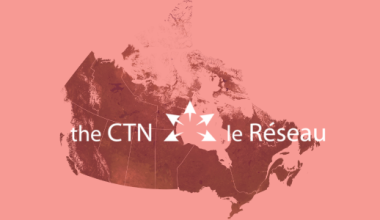A Brief History of Medical Cannabis in Canada
For centuries, cannabis has been used as a medicinal plant. Ancient pharmacologic texts around the world noted its ability to alleviate pain, stimulate appetite, mitigate nausea, treat insomnia, and even act as a surgical anaesthetic. Thousands of years later, cannabis is used by over 150 million people, despite it being illegal to grow and use recreationally in most countries. However, its potential to positively impact health, supported by scientific evidence, is slowly being recognized. More than 20 countries have legalized cannabis for medicinal use.
Map showing the legal status of medical cannabis across the world where green is legal when prescribed (authorized by a physician), and blue is legal for any use. Image from Wikimedia Commons.
Canada was the first country to legalize the regulated medical use of cannabis, doing so on July 30, 2001. Physicians were able to prescribe cannabis to patients and eligibility guidelines were provided. One of the patient groups mentioned in these guidelines were people living with HIV, where cannabis could be prescribed to alleviate symptoms of pain, wasting, lack of appetite, weight loss, and nausea.
CTN’s Community Advisory Committee Chair Enrico Mandarino was consulted as an expert on provisions for patients as part of the original Medical Marijuana Medical Access Regulations (MMAR). In the early days of HIV and AIDS, the number of people dying from AIDS-related illnesses was skyrocketing. Patient activists helped remove barriers to early access to effective medications for preventing AIDS-related illnesses and death. In the late 90s, people were using cannabis as medicine to treat various conditions and illnesses. Patient activists challenged the laws through courts to remove access barriers to cannabis for medical use. “I jumped on the bandwagon because cannabis helped a lot of people living with HIV,” he said.

Shari Margolese and Enrico Mandarino
Shari Margolese, co-lead of CTN’s Community Engagement Team, also sat on the community advisory board for the MMAR. “We offered advice on dosages, how many plants people should be able to have, and several other regulations to help improve accessibility,” she said. “One big change that needed to happen was to allow people to choose which method they preferred to take the cannabis. Smoking the plant and eating an edible affects people differently, so allowing them to choose how they want to medicate is important.”
The legalization of cannabis for medicinal use opened the door for conducting clinical trials to better understand its impact on health. Researchers are interested in the effects of different cannabinoids, which interact with specific receptors in the nervous and immune systems. The CTN has been at the forefront of much of the research related to cannabis and HIV in Canada.
The CTNPT 028 Study
Although there are several cannabinoids present within the cannabis plant, two compounds in particular have been the focus of medical research studies. Delta-9 Tetrahydrocannabinol (THC) and cannabidiol (CBD) have been found to have anti-inflammatory properties under certain conditions. THC is also noted for its psychoactive impact on mood via its effects on the brain.

Drs. Cecilia Costiniuk and Mohammad-Ali Jenabian
CTN Investigators Drs. Cecilia Costiniuk and Mohammad-Ali Jenabian worked with Enrico and Shari to develop a pilot trial evaluating the safety, tolerability, and immune effects of cannabinoids in people living with HIV on effective antiretroviral therapy (CTNPT 028).
“It was very well known that CBD and THC had anti-inflammatory effects in various lab models and animal models, but there was little research in people living with HIV,” shared Dr. Jenabian, an HIV immunologist at the Université du Québec à Montréal. “We identified a gap in the knowledge to assess the potential beneficial impact. About up to 70 per cent of people living with HIV use cannabis and appreciate its ability to reduce some of the symptoms related to their chronic conditions.”
In this pilot trial, participants took capsules that had a set ratio of THC and CBD or CBD-only daily, with their dosage increasing throughout the study based on their tolerability. Because this study was proposed when cannabis was only legal for medicinal use, there were several aspects that needed to be considered. Dr. Costiniuk, the principal investigator of the study and also a clinician at the Chronic Viral Illnesses Service of the McGill University Health Centre, noted that, “It was the first cannabis study in our clinic. We had to go through Health Canada to get permission to administer the capsules for research purposes. The company providing the capsules also had to have them standardized and approved by Health Canada. We also had to obtain a Cannabis Research License from Health Canada. There was a lot of anxiety in the clinic because we wanted to be sure we were doing things correctly, especially since we were administering a substance whereby some participants could potentially experience psychoactive. This was very different than the usual studies we do involving antiretroviral medications, so there was a lot of new learning to do.”
 In order to accurately measure the impact that THC and/or CBD had on inflammation the study needed to include a washout period where participants could not use cannabis in any form for a couple weeks prior to starting the trial. With such a high proportion of people living with HIV using cannabis, this was a challenge for recruiting participants, which contributed to low study enrollment.
In order to accurately measure the impact that THC and/or CBD had on inflammation the study needed to include a washout period where participants could not use cannabis in any form for a couple weeks prior to starting the trial. With such a high proportion of people living with HIV using cannabis, this was a challenge for recruiting participants, which contributed to low study enrollment.
Although the CTNPT 028 pilot study only ended up enrolling ten participants, the results from the study are promising. Oral cannabinoids were found to be generally safe and well-tolerated. They also appeared to reduce markers of “leaky gut”, the phenomenon where the barrier between the gut and the bloodstream is weakened, enabling bacterial products from the intestine to enter the bloodstream. Eventually, this constant stimulation of immune cells renders them dysfunctional and “exhausted”.

Example of a bottle which contained the medical cannabis for the study.
The metabolism of cannabinoids in the blood when taken orally, via the digestive tract, is very different than when it is inhaled via the lungs. Medication taken by mouth passes through the liver, where it is metabolized. The digestive tract, and especially the intestine, is one of the major tissues impacted by HIV infection, so it was great that improvement was seen in some markers of intestinal leakiness at doses which were overall safe and well-tolerated.
These initial findings are the first steps towards a better understanding of the endocannabinoid system, which is involved in metabolism throughout the body. In people living with HIV, where persistent inflammation can lead to several health complications, finding effective options to reach a healthy balance of pro- and anti-inflammatory endocannabinoids could decrease the chances of having inflammation-related health issues further down the road.
With recreational cannabis now legalized in Canada and several studies happening all over the world evaluating its medicinal properties, what makes continuing this clinical trial research so challenging?
Roadblocks to cannabis research in Canada
There were only ten participants recruited in this pilot trial, which is less than half of the intended 26 participants, per study protocol, when the project was initially proposed. Several factors were at play that led to this low study recruitment, some of which were specific to the timing of the CTNPT 028 study, whereas others were impacted by clinical research guidelines for cannabis use.
“There was one person interested in participating who was getting reimbursed for their medical cannabis use,” shared Dr. Costiniuk, “But they found out that if they participated in the study, their reimbursement would stop. It had taken a year for them to get accepted for this reimbursement program, but they did not want to risk losing their reimbursement by participating in this research.”
 Because tolerance and safety were key components of this study, in-person check-ups and blood collection were required every two weeks which was another factor that severely impacted participation. “People were a bit anxious because it was a cannabis study, which means we really needed to monitor people,” said Dr. Costiniuk. “We had a handful of people who said it’s interesting, but it was not feasible to come every two weeks for an appointment.”
Because tolerance and safety were key components of this study, in-person check-ups and blood collection were required every two weeks which was another factor that severely impacted participation. “People were a bit anxious because it was a cannabis study, which means we really needed to monitor people,” said Dr. Costiniuk. “We had a handful of people who said it’s interesting, but it was not feasible to come every two weeks for an appointment.”
The recruitment period also ended up occurring during COVID-19 pandemic, another concern for potential participants especially given that the clinic is located in a hospital and people did not want to risk getting exposed to COVID-19.
To be able to conduct this study, the researchers not only needed willing participants, they also needed a Health Canada-approved source of cannabis.
“We’re not allowed to use what is directly sold on the shelf in studies,” said Dr. Costiniuk. “It has to be from a Health Canada–approved source, with all the information that comes along with a pharmaceutical-grade product.”
Initially, researchers worked with Tilray, one of Canada’s first licenced medical cannabis producers, who was providing the capsules that followed Health Canada’s strict guidelines. Unfortunately, Tilray was bought by another company based in the U.S. With this change of ownership, the medication being used for the study, even if it was the exact same, would have to go through the Health Canada regulations procedure again.
Enrico, who also works as the Head of Quality for Canadian medical cannabis supplier Aurora Cannabis Enterprises Inc., shares some insight into the medical cannabis industry. Aurora is the leading provider of medical cannabis to Canadian patients. “We’ve got so many restrictions and so many compliance issues when it comes to providing medical cannabis for research purposes in Canada. It’s just not worth it for companies to even provide the medical cannabis for free to help support clinical trials.”
Stigma remains
Despite the medical potential of cannabis, there are significant barriers within the health care system itself, largely due to stigma and doubt.

Guy-Henri Godin
Guy-Henri Godin, a participant of the CTNPT 028 trial and member of CTN’s Community Advisory Committee, shares his experience. “My physician will easily prescribe me slow-acting morphine, 60 milligrams twice a day. But cannabis is not listed as an admissible substance in the Québec Health Booklet. Because of this, my family doctor tells me they are unable to prescribe it, even if recreational cannabis is being sold at a dispensary down the street where I can go and pick it up.”
Shari has had a similar experience, “When talking to physicians about prescribing cannabis, they would say something like, ‘We can do no harm,’ but then prescribe opiates. It’s a risk–benefit analysis all the time so I think more discussion and knowledge translation materials are needed to help share messages with care providers.”
There is also a catch-22 when it comes to cannabis research, and that is the lack of extensive cannabis research. “While there are several studies looking at almost every condition out there, there are not many clinical trials with enough participants and correct methodology,” said Dr. Costiniuk. “Some of the doctors are skeptical. They say there is not sufficient evidence for cannabis research, because the quality of the studies is often poor. There are often methodological flaws in the study design. The type of evidence that is expected before doctors feel comfortable recommending a medication, and before medications can be included in practice guidelines, such as in cardiology, is from multi-centre, international randomized placebo-controlled clinical trials with long durations of follow-up and thousands of participants. This isn’t feasible for medical cannabis. However, we need to start by identifying key knowledge gaps and designing methodologically strong studies which will help us to gradually build our understanding of its effects in different patient populations and for different conditions.”
“Studying cannabis is much more complicated in Canada than anywhere else, despite it being legalized here,” said Dr. Jenabian. “There are large clinical trials ongoing in Israel, Germany, and France where the plant is not legalized, but trying to conduct research of a similar scale in Canada is challenging.”
“How can we learn about cannabis and its impacts on health, especially in the legalization era, when we’re not allowed to study what many people are actually using?” said Dr. Costiniuk.
The importance of a distinct medical stream
Medical cannabis and research around its use is coming to a critical time. In light of legalization, the federal government is conducting a review of the Cannabis Act to figure out if distinct legislation of medical versus recreational use of cannabis is still required. Even though cannabis is widely available for recreational use, researchers and community members say that a distinct medical stream is still needed to differentiate its potential for providing therapeutic benefits from recreational use.
“The largest proportion of newer medical cannabis users are seniors, and most of them prefer an edible or distillate or a tincture, something that they don’t have to smoke,” said Shari. “But most doctors don’t know about it, they aren’t educated.”
When a treatment is formally recognized as a medicine, there is education to health care providers about how to administer it. Dr. Costiniuk elaborates, “A lot of it depends on a doctor’s familiarity and comfort level with medical cannabis. If there’s no medical stream, there won’t be incentive to include the subject in medical curriculums or for doctors to learn about cannabis and cannabinoids.”

Examples of non-smoking options to consume medical-grade cannabis.
Maintaining a separate medical stream for cannabis and cannabinoids may also help eliminate stigma. “Smoke is not very discreet, and smoking anything does carry a stigma with it,” said Dr. Jenabian. “But when you’re ingesting something, it can be very discreet. And if something looks like medication, it can help normalize ingesting cannabinoids as medicine.”
There is also the significant matter of medical reimbursement. Currently, there are over 200,000 Canadians who are registered federally as medical cannabis clients and being financially compensated for their medication. If the medical cannabis stream is dissolved, this could be devastating to those depending on cannabis as their adjunct therapy.
As a cannabis advocate, Shari has been fighting for reimbursement for people who use cannabis for medical purposes. “It continues to be a struggle. Even now most people aren’t financially compensated for their medication unless they are lucky enough to find a physician willing to prescribe it and their insurance company agrees. Public payors do not reimburse cannabis,” she said. She emphasizes that removing cannabis and cannabinoids from the medical stream would prevent people from potentially being reimbursed for its cost, significantly limiting access.
There are several more reasons to maintain a separate medical-based cannabis stream, including facilitating research, ensuring an adequate supply of safe products, and providing standardized healthcare monitoring for adverse events. For a more comprehensive analysis on why a distinct medical stream is needed, take a look at Dr. Costiniuk et al. commentary published in the Journal of Cannabis Research.
By being the first place to legally allow healthcare providers to prescribe cannabis, Canada paved the way for the world to formally recognize its potential as a medication. While the legalization of recreational cannabis did open the doors for more conversation about it, there is more work to be done. Cannabis exhibits a wide range of effects due to its diverse composition of cannabinoids, including THC, CBD, terpenes, working synergistically. Its potential to aid people is better harnessed when considering how different cannabis strains and cannabinoid compositions can positively impact health.
“If we’re actually going to study cannabis and do proper research on its medicinal properties, we have to treat it like a drug, but we have to also treat it like a plant,” said Enrico.
This study was supported by the CTN and by the Lotte & John Hecht Memorial Foundation.






